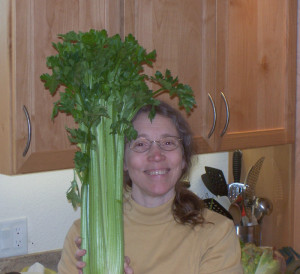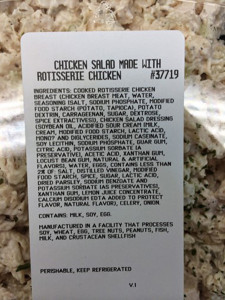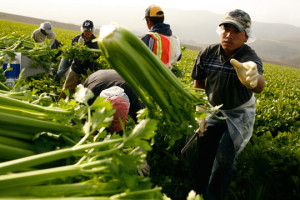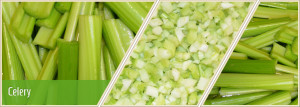Bill Marler has kindly made public the final health report regarding the E. coli O157:H7 outbreak that sickened at least 74 people attending a July picnic for Elders of the Fond du Lac Band of Lake Superior Chippewa, in Minnesota.
 On July 17, 2014, a physician called the Minnesota Department of Health (MOH) to report that five individuals had been treated in the emergency department at Community Memorial Hospital in Cloquet for bloody diarrhea. All five cases had reported attending a picnic for Elders of the Fond du Lac Band of Lake Superior Chippewa on July 11that was catered by Jim-N-Jo’s Northland Katering. The caterer is licensed by the University of Minnesota (UMN) and operated out of a kitchen located at the Cloquet Forestry Center. MOH Environmental Health (EH), UMN EH, Fond du Lac Human Services, and MOH Tribal Relations were notified and an investigation was initiated.
On July 17, 2014, a physician called the Minnesota Department of Health (MOH) to report that five individuals had been treated in the emergency department at Community Memorial Hospital in Cloquet for bloody diarrhea. All five cases had reported attending a picnic for Elders of the Fond du Lac Band of Lake Superior Chippewa on July 11that was catered by Jim-N-Jo’s Northland Katering. The caterer is licensed by the University of Minnesota (UMN) and operated out of a kitchen located at the Cloquet Forestry Center. MOH Environmental Health (EH), UMN EH, Fond du Lac Human Services, and MOH Tribal Relations were notified and an investigation was initiated.
Methods
Cases were identified through routine laboratory surveillance and interviews with event attendees identified through contact information provided by event hosts. A case was defined as an individual who attended an event catered by Jim-N-Jo’s Northland Katering and subsequently developed diarrhea (3 loose stools in a 24- hour period) that was either bloody or at least 3 days in duration, or an individual who had E. coli 0157:H7 isolated from a stool culture with a pulsed-field gel electrophoresis (PFGE) pattern indistinguishable from or within 3 bands of the main outbreak pattern by at least 1enzyme (Xbal or Bin i ). All Shiga toxin-producing E. coli cases reported to MOH are interviewed about potential exposures, including food consumption, as part of routine enteric disease surveillance. Event attendees identified through event hosts were interviewed about food consumption at the event and illness history.
Stool samples from consenting patrons and food workers were submitted to the MDH Public Health Laboratory (PHL} for bacterial and viral testing.
A UMN sanitarian visited the catering facility on July 18 to evaluate food preparation and handling procedures, interview employees, collect food invoices, and gather contact information and menus for catered events.
The Minnesota Department of Agriculture (MDA) conducted traceback investigations of food items of interest to determine the source and possible routes of contamination of those items. MDA also collected samples of suspected products from the caterer for E. coli 0157:H7 testing by the MDA Laboratory. All E. coli 0157:H7 isolates recovered from food were forwarded to the MOH PHL for PFGE subtyping.
Results
A total of 199 individuals from seven catered events were interviewed. Of these, 74 (37%) reported recent gastrointestinal illness, including 57 (29%) who met the case definition. Seventeen individuals were excluded from analysis; 16 attendees reported i!!ness that did not met the case definition, and 1individual possibly represented a secondary infection to an ill household contact. The state of residence was reported as Minnesota for 48 cases, Wisconsin for 4, Alabama for 2, Illinois for 1, Indiana for 1, and Ohio for 1.
 Thirty-seven (65%) of the cases were female; the median case age was 62 years (range, 4 to 85 years). All cases reported diarrhea, 55 {96%) cramps, 35 (61%) bloody stools, 21 (37%) vomiting, and 11(19%) fever. The median incubation for cases was 91 hours (range, 9 to 174 hours); the median duration of illness was 157 hours (range, 52 to 288 hours) for the 11cases who had recovered by the time of interview. Illness onset dates ranged from July 8 to July 23. Twenty-one {37%) cases sought medical care at a clinic, 18 (32%) were seen at an emergency department, and 9 (16%) were hospitalized. Hospitalizations ranged from 2 to 6 days. !’Jo cases were diagnosed with hemolytic uremic syndrome or died.
Thirty-seven (65%) of the cases were female; the median case age was 62 years (range, 4 to 85 years). All cases reported diarrhea, 55 {96%) cramps, 35 (61%) bloody stools, 21 (37%) vomiting, and 11(19%) fever. The median incubation for cases was 91 hours (range, 9 to 174 hours); the median duration of illness was 157 hours (range, 52 to 288 hours) for the 11cases who had recovered by the time of interview. Illness onset dates ranged from July 8 to July 23. Twenty-one {37%) cases sought medical care at a clinic, 18 (32%) were seen at an emergency department, and 9 (16%) were hospitalized. Hospitalizations ranged from 2 to 6 days. !’Jo cases were diagnosed with hemolytic uremic syndrome or died.
Twenty-seven laboratory-confirmed cases representing three different catered events were identified, including seven ill individuals who originally tested negative for Shiga toxin by Meridian lmmunoCard STAT! EHEC at a clinical laboratory. Multiple closely related Xbal and Bin i patterns were observed among attendees of each event. Nineteen (70%) isolates were indistinguishable by Xbal from the subtype designated EXHXOl.0238 by the Centers for Disease Control and Prevention (CDC) (Minnesota pattern designation MN1393), five (19%) isolates were designated as EXHXOl.0074 (Minnesota pattern designation WAl), and one isolate each was designated as EXHXOl.0696, EXHXOl.0344, and EXHXOl.0248. Each of these patterns was two or fewer bands different from the main pattern Xbal with the exception of EXHXOl.0344, which was four bands different from the main pattern and two bands different from WAl. By Bini, 20 (74%) isolates were designated as EXHA26.1045, 6 (22%) isolates were designated as EXHA26.0621, and 1isolate was designated as EXHA26.1577.
During the initial follow-up with the Fond du Lac Band, it was discovered that many of the attendees of the Elder Picnic also might have had attended a Veteran’s powwow held July 12-13 on the reservation. The food for this event was provided by several licensed operators, but did not include Jim-N-Jo’s Northland Katering. The powwow was ruled out as the source of illness because only two ill individuals reported only attending the Veteran’s powwow. All other attendees of the powwow also attended an event catered by Jim-N-Jo’s.
Jim-N-Jo’s catered at least 12 events from July 5 to July 17. Menus and contact information for attendees were available for six events. Illness that met the case definition was identified at four of these events (July 11, picnic on the Fond du Lac Reservation; July 12, wedding; July 14-16, 3-day conference for a private company; and July 16, focus group on the Fond du Lac Reservation), and an additional case was identified through routine surveillance that attended an event hosted by Carlton County on July 17 that was also catered by Jim-N-Jo’s.
Of the 199 individuals interviewed, 122 (61%) attended the picnic on July 11; among these, 43 (35%) cases were identified. One culture-confirmed case reported onset of illness on July 8 before attending the picnic and could not recall attending any other catered events. However, the case did report taking part in other activities sponsored by the tribe that may have been catered by Jim-N-Jo’s . The food served at the picnic inciuded hamburgers, hot dogs, brats, chicken breasts, buns, condiments,onion, lettuce, tomato, cheese slices, sauerkraut, baked beans, potato salad, fruit salad (watermelon, cantaloupe, pineapple, honeydew, and strawberries), corn, chips, cookies, and packaged beverages. In the univariate analysis including attendees of the picnic, consumption of potato salad (37 of 38 cases vs. 44 of 66 controls; odds ratio [OR], 18.5; 95% confidence interval [Cl], 2.4 to 143.9; p < 0.001) was associated with illness.
Twenty-two of the individuals interviewed attended the focus group on Ju!y 16; two (9%) met the case definition (both were culture-confirmed). Of these, one case also attended the Elder picnic and reported onset of illness before the focus group. The menu for the focus group included a build-your-own salad buffet with several types of cut leafy greens, chicken, numerous vegetable toppings, bread and butter, strawberries, cookies, and water. Fresh celery and onions were available as vegetable toppings.
The wedding on July 12 was attended by approximately 300 people. Only a partial list of wedding attendees was provided. Of the 20 people interviewed, 9 (45%) met the case definition (including 5 cases who were culture confirmed). The menu for the wedding included pulled pork sandwiches, buns, cheese, onions, fruit salad (watermelon, cantaloupe, pineapple, honeydew and strawberries), vegetable tray (carrots, celery, broccoli, and cauliflower), dill dip, ranch dip, cheesy potatoes, baked beans, corn, packaged beverages, and cupcakes not provided by the caterer. Among wedding guests, no food was statistically associated with illness. However, consumption of celery sticks (5 of 9 cases vs. 2 of 8 controls; OR, 3.75; 95% Cl, 0.5 to 29.8; p = 0.33), and cantaloupe (6 of 8 cases vs. 3 of 7 controls; OR, 4.0; 95% Cl, 0.4 to 35.8; p = 0.31) had elevated odds ratios. The original menu provided to MOH did not include chopped onions that were available as a sandwich garnish. Five of nine cases were re-inten1iewed about onion consumption; no cases reported consuming onions at the event.
Twelve of the 21 people who attended the 3-day conference (July 14-16) were interviewed; three cases were identified. Lunch was served each day (July 14: pulled pork sandwiches, cheese, onions, potato salad, fruit salad, and cookies; July 15: salad, wild rice, red potatoes, beef tips, grapes, bread, and cookies; and July 16: chicken wild rice soup, make-your-own sandwich buffet, cookies, and banana bread). The small number of cases and controls precluded a meaningful statistical analysis among conference attendees.
No list of attendees was provided for the meeting held on July 17. One case was identified through routine surveillance who attended the event. The case reported eating ham, turkey, sausage, lettuce, tomato, cucumber, potato salad, strawberries, and a cookie.
Raw celery and onions were the only food items served at all five events with identified cases. Three events (picnic, 3-day conference, and meeting) were served the same batch of potato salad that contained raw celery and onions. The celery was also served as part of a vegetable tray at the wedding and a chopped garnish on the salad bar for the focus group. Chopped onions were also available at all events. In the univariate analysis including all events, consumption of celery (46 of 52 cases vs. 55 of 95 controls; OR, 5.6; 95% Cl, 2.2 to 14.3; p <0.001) was significantly associated with illness, and onions (42 of 51 cases vs. 61of 90 controls; OR, 2.2; 95% Cl, 1.0 to 5.2; p = 0.08) approached a statistically significant association with illness. In a multivariate model, only consumption of celery (adjusted OR, 10.1;p = 0.004) was significantly associated with illness.
UMN sanitarians visited the catering kitchen on July 18. All five employees were interviewed. One employee reported onset of diarrhea on July 14 and recovery on July 16 and worked while ill during July 15-16. A stool specimen submitted by the employee was positive for E. coli 0157:H7 with the main outbreak PFGE pattern. The employee reported sampling or tasting food during preparation.
Ingredients and preparation procedures for menu items were reviewed. The sanitarian noted inconsistent glove use and issues with date marking. No improper practices or procedures were noted with regard to cooking, cooling, or cross-contamination. The ingredients for the potato salad that was served at the picnic, 3-day conference, and meeting were prepared over a 3 day period. On July 7, the potatoes were boiled and cooled; on
July 8, celery and onions were washed and cut; and on July 9, potatoes were peeled and cut, and potato salad ingredients (potatoes, celery, onions, hard boiled eggs, mayonnaise, mustard, dried dill, sugar, pickle juice, vinegar, salt, pepper, and commercially prepared potato salad) were assembled and mixed separately into four 5-gallon bins. The celery that was served at the wedding was cut into sticks on July 10, stored in water, and added to the vegetable tray on July 12. The celery that was served at the focus group was chopped sometime during July 7-15 and stored in water before the event.
On July 21, an MDA inspector picked up leftover food from the caterer that was served at the implicated events, including potato salad, strawberries, honeydew, pineapple, and cantaloupe . The potato salad was positive for E. coli O157:H7; all other food samples were negative. Multiple PFGE subtypes were isolated from the potato salad, including the two main patterns isolated from the cases and two other closely related patterns that were not found among the case isolates. Additionally, on July 28, leftover celery and onions from the same shipment as what had been served in the potato salad, at the wedding, and the focus group were collected from the caterer and tested. Both products were negative.
The caterer ordered all fresh produce from Upper Lakes Foods, Inc. The celery that was served at all of the events was received by the caterer on June 25 in a case of 24 heads. MDA worked with Pro*Act distributing and Mann Packing to identify the field in California where the celery was grown as Martignoni Ranch block Sc. The California Department of Public Health {CDPH) was notified of the outbreak and traceback investigation and was able to confirm that the field was owned by Costa Farms and harvested by Mann Packing. The field is adjacent to a defunct dairy operation north of Gonzales, California in the Salinas Valley. CDPH notified the California Food Emergency Response Team {CalFERT) which conducted an inspection of the field and collected five water and soil samples on August 13. No potential cross-contamination issues or positive environmental samples were detected. The inspectors reported that grazing cattle are occasionally present in the adjacent field, but were not in sight at the time of inspection.
Nationally, one additional E. coli O157:H7 case with an isolate that was indistinguishable by PFGE was identified in Indiana. The case reported onset of illness on July 2 and no travel to Minnesota. No connection was found to the Minnesota outbreak.
Conclusions
This was a foodborne outbreak of E. coli O157:H7 infections associated with multiple events catered by Jim-N Jo’s Katering. Cases were associated with five events that took place from July 11to July 17. Potato salad served at three events was found to be contaminated with E. coli 0157:H7 that was indistinguishable from case isolates by PFGE. Cases were also identified at two additional events that did not serve the potato salad, but served celery that was from the same shipment as the celery in the potato salad. Contaminated celery that was served in some form at all five events was the most likely vehicle of transmission. The source of contamination was not identified, but sampling in the field was limited. It is still plausible that celery could have become contaminated during production.
 Public health investigators used the PulseNet system to identify illnesses that were part of this outbreak. PulseNet, the national subtyping network of public health and food regulatory agency laboratories, is coordinated by CDC. DNA fingerprinting is performed on E. coli bacteria isolated from ill people by using a technique called pulsed-field gel electrophoresis, or PFGE. PulseNet manages a national database of these DNA fingerprints to identify possible outbreaks.
Public health investigators used the PulseNet system to identify illnesses that were part of this outbreak. PulseNet, the national subtyping network of public health and food regulatory agency laboratories, is coordinated by CDC. DNA fingerprinting is performed on E. coli bacteria isolated from ill people by using a technique called pulsed-field gel electrophoresis, or PFGE. PulseNet manages a national database of these DNA fingerprints to identify possible outbreaks.







.jpg) problems, and many were hospitalized before and during the onset of their infection.
problems, and many were hospitalized before and during the onset of their infection. But some are just dumb, and it’s good to see the science types in New Zealand calling out some BS.
But some are just dumb, and it’s good to see the science types in New Zealand calling out some BS.